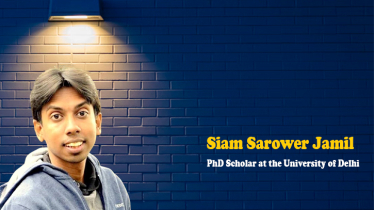
Photo : Messenger
The Bangladesh capital city of Dhaka is home to more than two crore people. The capital city has been occupying the first place on the list of cities suffering from air pollution. Environmentalists say that while other countries are taking steps to curb air pollution in their big cities, Dhaka is failing in this regard.
Experts say that the level of pollution in Dhaka has increased mainly due to six types of substances and gases in the dust. Among those, the pollution in Dhaka has increased due to PM 2.5. The first of the six types of harmful substances is PM (particulate matter) small particles of 2.5 or 2.5 microgram size. Then PM10 is the highest. To understand the size of this dust, for example, one sixth of the diameter of the hair on the head is 2.5.
It is so tiny that it cannot be seen with the naked eye. The remaining four include sulfur dioxide, nitrogen, carbon monoxide and lead. The air index is determined by averaging the fractions of these six substances and gases. That index is called Air Quality Index.
IQAir is an air quality monitoring technology company based in Switzerland. They publish lists of cities with polluted air.
This live AQI index is based on air quality and alerts people about how clean or polluted the air is in a particular city. Dhaka, the capital of Bangladesh, is now the second most polluted city in the world. Dhaka's air quality index (AQI) at 6:50 am on Thursday, October 19, was 183, which is considered 'very unhealthy'.
In terms of air pollution, Dhaka's Air Quality Index (AQI) was 182 among the world's cities at around 8:30 am last Wednesday, October 19. The score at the same time last Tuesday was 186. This air quality is unhealthy. If the air pollution index of Dhaka is 50, it will not fall into the level of pollution. But several days of last January and February, the level of the index has repeatedly reached 300. While Dhaka ranks first, it can be seen that the index value of Dhaka is almost 100 higher than the second ranked cities, which is very worrying.
If the index is 101 to 150, you have to be careful. 150 to 200 index is unhealthy. And if the index is 200 to 300, then it is very unhealthy. Air pollution is a major problem for Dhaka. Three factors are identified in bold for this. These are — brick kilns, vehicle fumes and construction dust. A joint report by the Department of Environment and the World Bank has mentioned these three reasons. November, December, January, February—Dhaka's air is more polluted during these four months of the year. Among them, air quality is worst in January.
A report by the Department of Environment and the World Bank in March 2019 stated that the three main sources of air pollution in Dhaka are brick kilns, vehicle fumes and construction dust. According to the United Nations, 9 out of 10 people worldwide breathe polluted air, and air pollution causes an estimated 7 million premature deaths each year, mainly in low- and middle-income countries.
When asked why Dhaka is repeatedly at the top compared to other countries, the expert said, 'The reason for pollution in each country is usually different. For example, brick kilns and old vehicles are the main causes of air pollution in Nepal, dust storms in Middle East countries. Where other countries have one or two causes of pollution, we have many. Pollution is mainly caused by four reasons.
Dhaka city's pollution is mainly caused by old vehicles, road digging and dust deposited on the roadside for construction, followed by brick kilns, polluted air from industries, burning of garbage. There are so many reasons why you should not work with any of them. We have to plan ahead with many things. There will be speedy work - something needs to be planned.'
Experts say, to get off the top of the air pollution list, government agencies need to expand their scope of work, take action quickly. Experts should research and find out how quickly this situation can be dealt with. Even journalists have something to do about it. They should raise the issues in writing, stating the status of action.
However, the Department of Environment does not agree with the experts. They say that several steps have already been taken to reduce air pollution. Anti-air pollution campaign is going on almost every day. Many brick kilns have already been demolished. Many industries have been closed. Water is often sprinkled on major roads. The operation is being conducted as per the instructions to prevent old vehicles from plying. Even leaflets are distributed, posters are printed and billboards are put up to make common people aware.
In spite of this situation, the implementation of the guidelines of the Ministry of Environment to prevent air pollution was not seen last year. Guidelines include covering construction material during road construction, use of advanced technologies like mini asphalt plants instead of sanding over bitumen.
Covering roadsides with concrete or grass, using vacuum sweeping trucks instead of brooms for road cleaning, sprinkling water at least twice on major roads. No enforcement action noted. Several studies have shown that breathing polluted air increases a person's risk of heart disease, chronic respiratory disease, lung infections and cancer. This increase in mortality is mainly due to stroke, heart disease, chronic obstructive pulmonary disease, lung cancer and acute respiratory infections, which are caused by polluted air.
The writer is columnist and television researcher
Messenger/Disha








